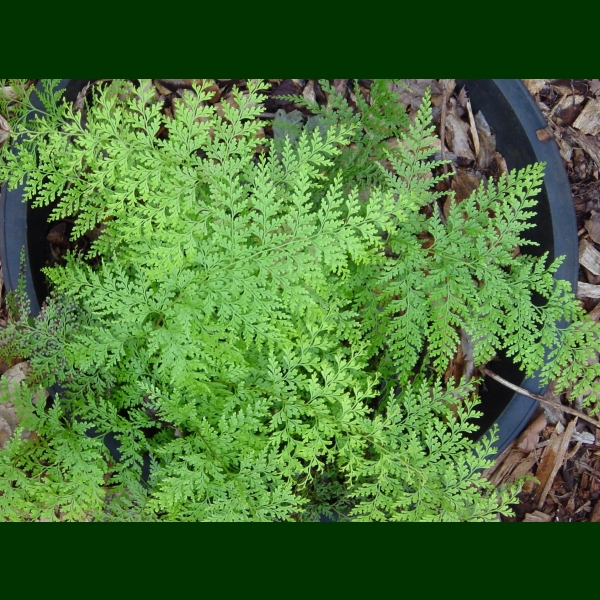 Hawaiian Name(s): pala‘ā
Hawaiian Name(s): pala‘āScientific Name: Sphenomeris chinensis
Vernacular Name: lace fern
Family: Lindsaeaceae
Status: indigenous
Authority: L.
Description: Fern.
Habitat S. chinensis tolerates a wide variety of environments, from exposed road cuts to closed, wet forests from 0–1220 m (Valiers 1995:56–57). Soil should be well-drained and moist; medium to high light (Hoshizaki & Moran 2002:400).
Medicines: For stomach disorders and lepo pa‘a (constipation) the pala‘ā is made into tea and mixed with ko‘oko‘olau (Bidens spp.) and other ingedients (Chun 1998:47).
Non Medicinal Uses: Fronds twined together with maile as an offering to the gods (Valier 1995:5) and a red dye is obtained from the old fronds (Krauss 1993:67).
Specific gravity of wood: n/a
Famous Locations:
Mele:
`Ōlelo Noeau:
Dye Color and Parts: Red-brownish (old leaves)
Kino lau:
Location on Bishop Museum Kalihi Campus:
Propagation Information: Grown in tissue culture from the spores; once in pot water well & fertilize moderately; thrives in ground with rich brown or red dirt soil; liquid fertilizer (fish emulsion) is good; can grow in full sun/shade as long as it is well watered/moist (Bornhorst 1996:71–72). Hawaiian Native Plant Propagation Database
